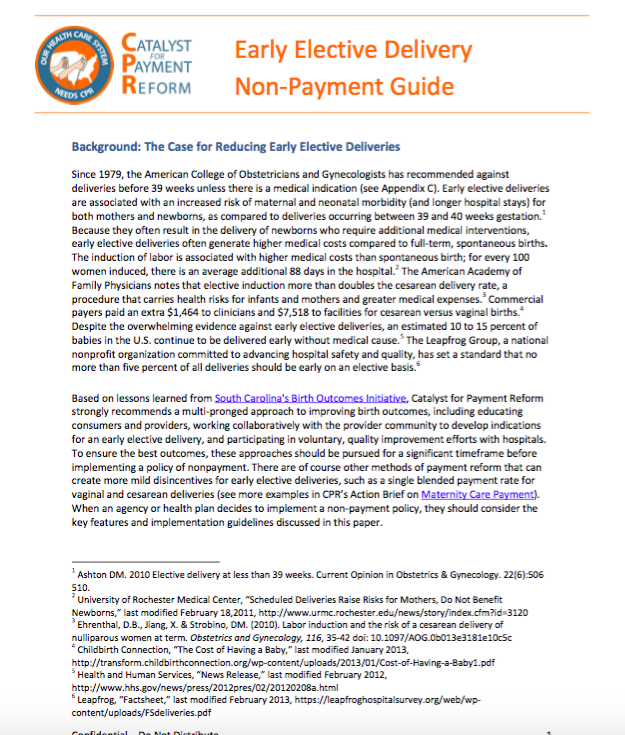How-to-Guide: Early Elective Non-Payment
Maternity care practices in the U.S. tend to include unnecessary interventions that are associated with worse health outcomes. There is overwhelming evidence that one of these interventions, early elective deliveries (EEDs), including non-medically indicated cesarean sections and early induction of labor, contribute to substantially higher health care costs, while increasing the risk of maternal and neonatal morbidity. However, there is also evidence that a non-payment policy for EEDs can dramatically alter provider incentives and further decrease the rate of EEDs, but it needs to be implemented carefully. The following CPR tool helps employers work with their health plans to implement strategies that create incentives for providers to adhere to evidence-based practices that improve outcomes for mothers and babies and help contain unnecessary costs.
How to use this tool:
This How-To-Guide outlines the importance of reducing early elective deliveries for improving birth outcomes and steps a purchaser can take to pursue a non-payment policy approach for early elective births.
Included in this tool:
This How-To-Guide includes:
- The Case for Reducing Early Elective Deliveries
- Key Features of an Early Elective Delivery Non-Payment Policy
- Steps to Implement a Non-Payment Policy for Early Elective Deliveries
- Appendices: Supporting data, IDC-9 codes, hospital pledge sample
Type: How to Guide
$199.00
$199



